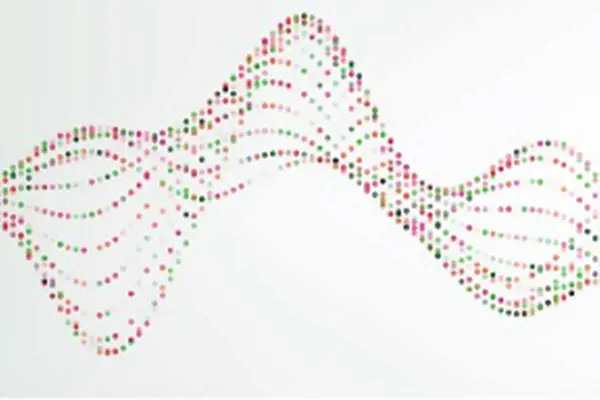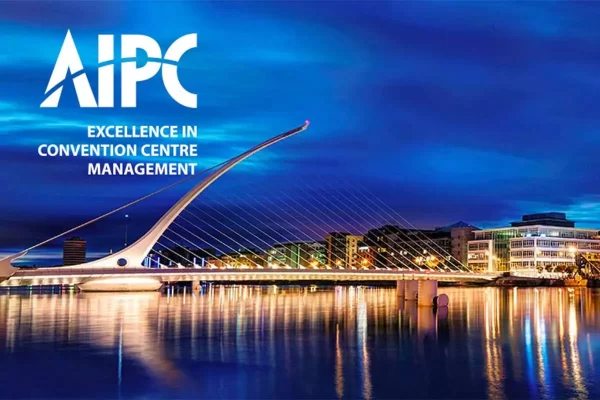by Chris Kappes, Exhibit City News
AI is a double-edged sword.
It promises to revolutionize live event processes, making them more efficient and cost-effective for all stakeholders. However, it will also alter or eliminate many traditional roles in event planning and management. This evolution, while challenging, is necessary to address the industry’s new realities.
TODAY’S REALITY
The live event industry is on a trajectory toward full recovery post-pandemic, according to Adam Sacks, President of Tourism Economics. Despite this positive trend, research from Gartner reveals a significant shift in marketing budgets, which fell to 7.7 percent of overall company revenue in 2024. This is down from an average of 11 percent in the four years preceding the pandemic, marking a new low since 2021. For industry suppliers, rising costs of labor, materials, insurance, rent, and more are eroding gross margins.
Further still, Freeman’s 2024 Exhibitor Trends Report shared that B2B marketers and audiences are younger and asking for: cost predictability, all-inclusive packages, more from lead acquisition, and new opportunities to communicate before and after an event.
CHALLENGES EVENT PLANNERS FACE
Based on industry interviews, corporate and agency event planners and project managers encounter significant challenges due to the complexity, time investment, and inherent friction in event planning. Depending on the scale of the trade show, corporate event teams dedicate substantial time to various phases:
Pre-Show Planning: 200-500 hours (about 3 weeks) in the 6-12 months planning cycle including goal setting, budgeting, booth design, logistics, and marketing strategies.
Booth Preparation: 100-300 hours (about 2 weeks) dedicated to finalizing design, ordering materials, staff training, and lead capture setup.
On-Site Execution: 8-12 hours each day in active booth management, networking, and lead capture activities.
Post-Show Follow-Up: 40-60 hours (about 2 and a half days) are assessing the show’s success, analyzing lead data, and preparing reports.
In total, 320 to 860 hours (about 1 month 5 and a half days) or more, depending on the event scale.
Note: Estimates vary based on event complexity, geography, and timelines.
Live Event Agencies:
Event agencies supporting their clients are no strangers to extensive time investment:
Pre-Show Planning: 100-300 hours (about 2 weeks) over 6-12 months to client meetings, goal setting, booth design, budgeting, logistics, and marketing strategy development.
Booth Preparation: For larger, custom-designed exhibits, 200 to 500 hours (about 3 weeks) or more.
Marketing and Promotion: 200-400 hours (about 2 and a half weeks) including digital marketing, social media campaigns, email marketing, and PR efforts.
On-Site Execution: 40-80 hours (focused on project management, not labor) on-site during multi-day trade shows.
Post-Show Follow-Up: 20-60 hours (about 2 and a half days) assisting with lead follow-up, performance analysis, and evaluation.
Note: Estimates vary based on event complexity, geography, and timelines.
AREAS AI CAN REVOLUTIONIZE
According to a 2023 study highlighted in Statista, exhibitors in the United States plan to participate in an average of 29.5 regional trade shows annually. Given the significant time investment required, AI’s potential benefits are evident: time savings, reduced friction, lower exhibition expenses, improved cost-to-value ratios, enhanced industry health, and increased preference among marketers.
Identified areas AI can and will support:
Lead Generation and Management: Efficiently identifying and qualifying leads by analyzing attendee data, social media profiles, and engagement patterns.
Customer Support: Streamlining real-time communication using chatbots, information collection, answering common questions, and resolving issues efficiently.
Personalized Recommendations: Analyzing attendee preferences and behavior to recommend relevant exhibitors, sessions, and networking opportunities.
Data Analytics: Processing large volumes of data generated during events to provide actionable insights on attendee behavior, booth performance, and event effectiveness.
Content Creation: Developing marketing materials, presentations, and booth designs by generating content and design suggestions based on industry trends and best practices.
Event Planning and Scheduling: Creating event schedules, booth placements, and floor layouts.
Security: Detecting and responding to potential threats, such as unauthorized access or suspicious behavior.
Language Translation: Facilitating communication between attendees and exhibitors from different regions, breaking down language barriers.
Audience Engagement: Curating interactive experiences at booths, such as virtual reality (VR) and augmented reality (AR) demos, gamification, and interactive presentations.
Predictive Analytics: Predicting attendance numbers, booth traffic, and other key metrics to enable better resource allocation and planning.
Feedback Analysis: Automating the analysis of post-event surveys and social media feedback to identify areas for improvement and track overall event sentiment.
Networking: Creating matchmaking algorithms to connect attendees with similar interests and goals, facilitating networking opportunities.
TAKEAWAY
While AI may be able to streamline processes, enhance efficiency, and maximize cost-effectiveness, the human touch — creativity and strategic decision-making — will remain the heart and soul of event planning and execution. AI is our partner, not our replacement, ensuring the vitality and enduring success of the industry. The future waits for no one. Jump aboard.
This story originally appeared in the Q3 2024 issue of Exhibit City News, p. 26. For original layout, visit https://issuu.com/exhibitcitynews/docs/ecn_q3_2024.
































